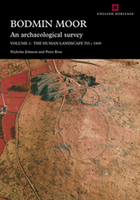English Heritage Archaeological Monographs
English Heritage, 2014. https://doi.org/10.5284/1028203. How to cite using this DOI
Data copyright © English Heritage unless otherwise stated
This work is licensed under the ADS Terms of Use and Access.
Primary contact
Historic England
The Engine House
Firefly Avenue
Swindon
SN2 2EH
Resource identifiers
- ADS Collection: 1416
- DOI:https://doi.org/10.5284/1028203
- How to cite using this DOI
Bodmin Moor An archaeological survey Volume 1: The human landscape to c 1800
Johnson, N., Bonney, D., Rose, P.
English Heritage (2008)
Abstract:

Year-by-year encroachment in the 20th century for cultivation or tree-planting provided the stimulus for the most extensive survey ever undertaken of the archaeological monuments of Bodmin Moor, a previously little-disturbed landscape rich in surviving structural evidence of the many ways, from the Bronze Age to the post-medieval period, in which people settled and exploited the Moor and its surroundings. The survey is remarkable not only for the extent of the area examined, but also for the number of monuments newly identified in the course of the work. Supplementing the survey text are detailed line drawings, plans, aerial photographs and large-scale maps.
Download monograph
| Bodmin Moor An archaeological survey Volume 1: The human landscape to c 1800, Johnson, N.|Bonney, D.|Rose, P., English Heritage (2008), ISBN: 9781848021372 | 36 Mb |





